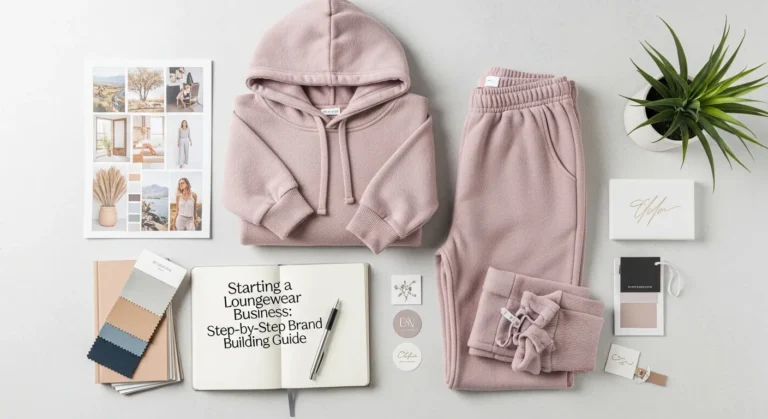Sweater vs Sweatshirt Comparing Styles, Comfort, and Usage
Many people often mix up sweaters vs sweatshirts because both are popular cold-weather garments. They seem similar but serve different purposes and have unique features that affect comfort, style, and use. Understanding these differences helps people make better choices for their wardrobe.
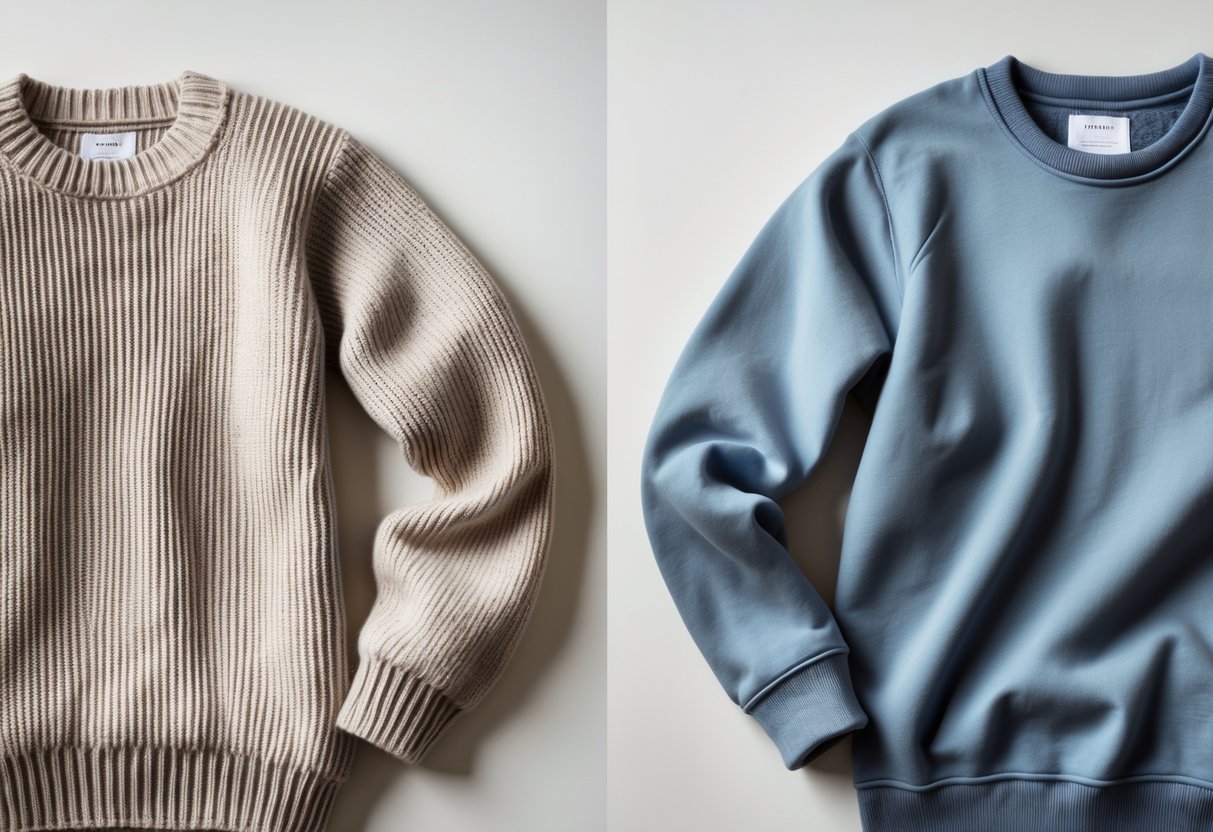
The key difference between a sweater and a sweatshirt lies in their material and design, which influence when and how each should be worn. Exploring these differences will guide the reader on when to pick a sweater or a sweatshirt, depending on the occasion and personal comfort.
1) Material Differences

Sweaters are usually made by knitting yarns like wool, cotton, or sometimes synthetic fibers. The knitting process creates loops that make the fabric stretchy and breathable. This helps sweaters trap warmth while allowing some air to pass through.
Sweatshirts, on the other hand, are often made from fleece or jersey fabric. These materials are generally thicker and softer on the inside. The fleece or cotton blends used give sweatshirts a smooth feel and added warmth.
The construction also differs. Sweaters are made by interlocking loops of yarn, while sweatshirts use woven fabrics. This affects the texture and appearance, with sweaters often having more visible weaving patterns.
Because of these materials, sweaters tend to look more formal or dressy. Sweatshirts usually have a casual look and are often used for sporty or relaxed wear. The choice of material plays a big role in the overall use and style of each garment.
2) Formality

Sweaters are often seen as more formal clothing. They come in styles like crew neck, V-neck, turtleneck, and cardigans. These styles allow sweaters to be worn in both casual and semi-formal settings.
Sweaters are usually made from materials such as wool or cashmere. This gives them a polished look that fits well in offices or social events.
Sweatshirts are designed for comfort and casual use. They are typically made from cotton or polyester blends with a soft fleece inside. This makes them good for relaxed activities like running errands or exercising.
Sweatshirts have a sporty style. They are often worn at home, during workouts, or in informal gatherings.
In summary, sweaters offer more versatility and a sharper appearance. Sweatshirts focus on comfort and fit better in casual or athletic situations.
3) Design Features
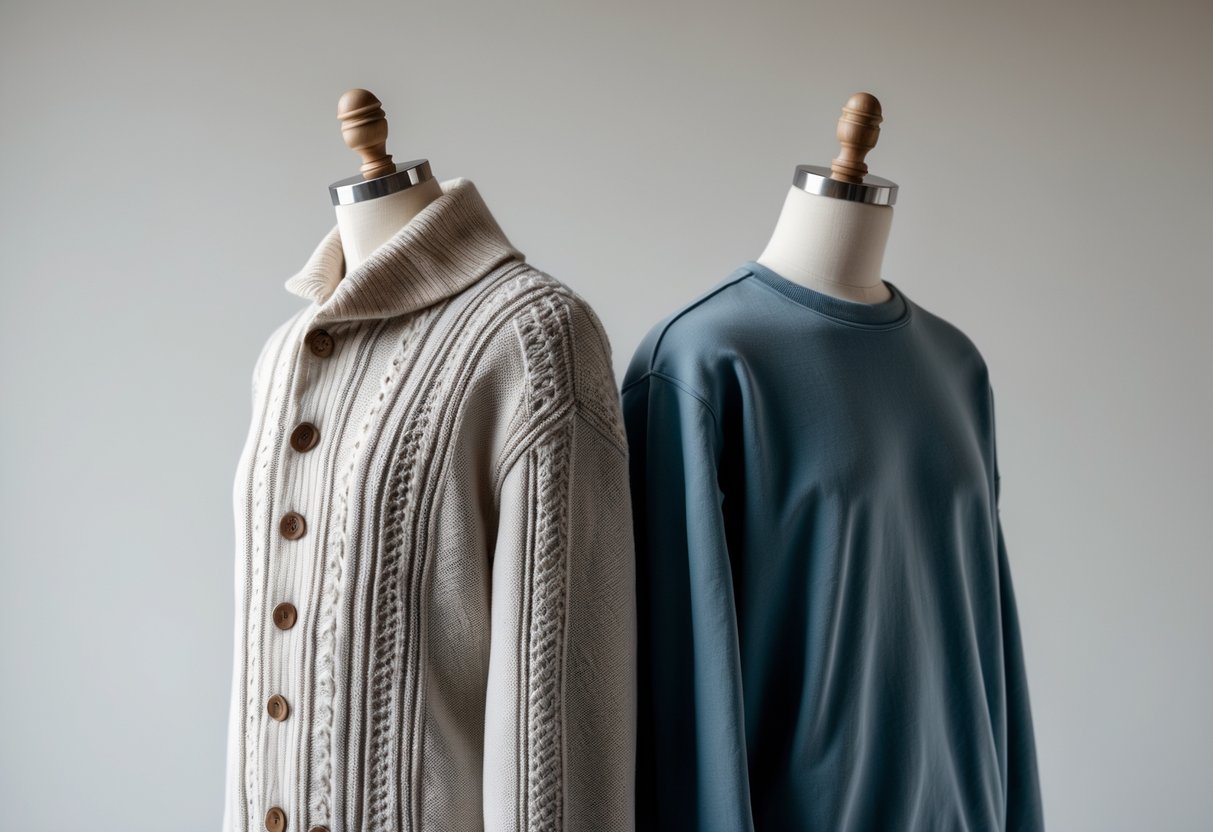
Sweaters commonly include design details like buttons and collars. Cardigans, a type of sweater, often feature a button-down front. These design elements give sweaters a more structured and formal look.
Sweaters may also have intricate patterns or textures. Knitted designs like cables, argyle, or lace add visual interest and can make the garment look more elegant.
Sweatshirts tend to have a simpler design. Most sweatshirts are pullovers without buttons or collars. They focus on comfort and ease of wear.
Ribbed cuffs and hems are typical on sweatshirts. These features help keep the sleeves and bottom in place. Some sweatshirts include hoods and pockets for extra function.
The design differences reflect the intended use. Sweaters often work well for dressier occasions, while sweatshirts suit casual and active settings.
4) Warmth Level

Sweaters keep warmth mainly by using dense knitting. The loops in the yarn create small air pockets that trap heat close to the body. This makes sweaters effective at insulation, especially when made from wool or thick yarn blends.
Sweatshirts use a different method to stay warm. They often have a soft fleece lining inside. This fleece traps heat by creating a cozy layer that holds in body warmth. Sweatshirts are usually lighter but still provide good insulation on cooler days.
Sweaters tend to be better for cold, dry weather because of their thick knit structure. Sweatshirts work well in milder conditions since their materials allow some breathability. Both garments offer warmth but suit different needs depending on the temperature and activity level.
The type of fabric and construction influences how well each garment traps heat. Sweaters rely on the knit to block cold air. Sweatshirts depend on the soft fleece to maintain comfort and warmth. Each has strengths for layering in cool to cold environments.
5) Fit and Comfort
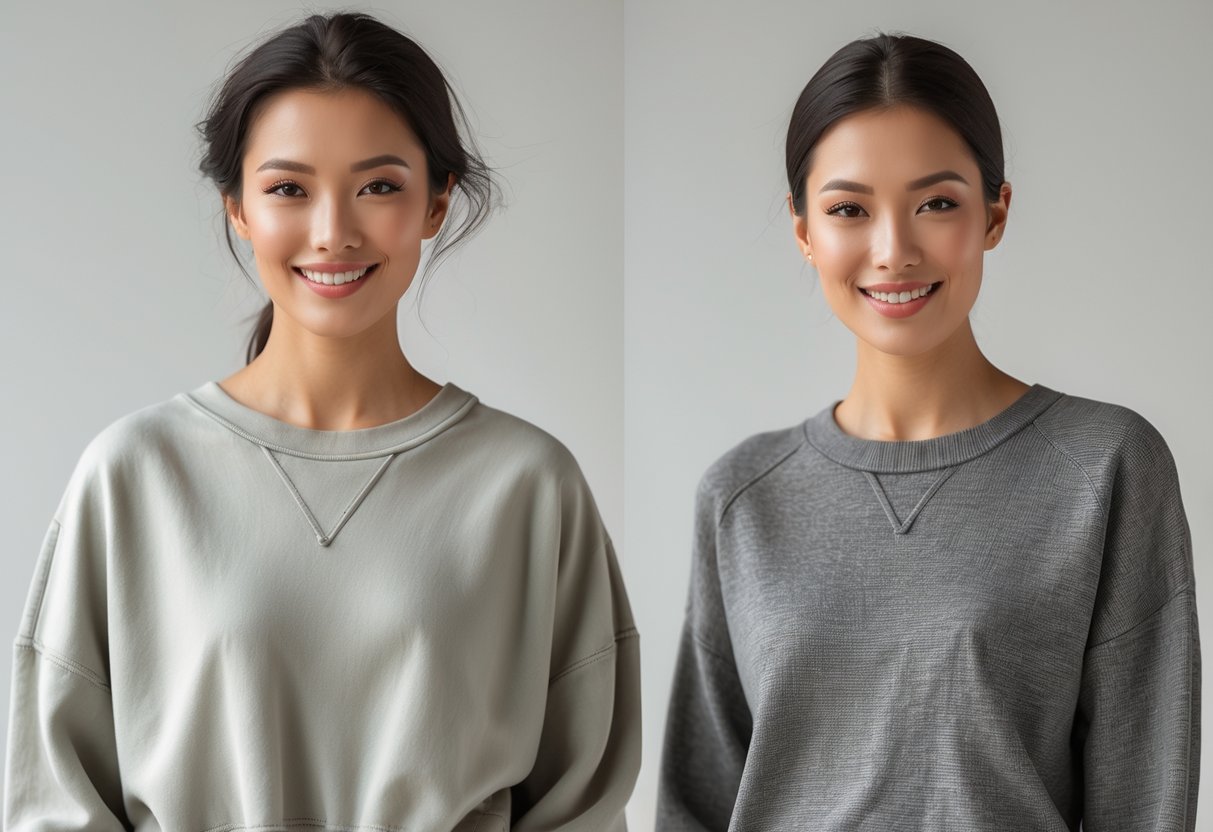
Sweatshirts usually have a relaxed and roomy fit. This makes them comfortable for casual wear and layering. Their loose shape allows for easy movement and a laid-back style.
Sweaters, on the other hand, vary more in fit. Many sweaters are designed to be worn closer to the body. This fitted style creates a clean silhouette and works well for both casual and dressier occasions.
Some sweaters use fine materials like cashmere or silk, adding to their sleek appearance. The fit can range from snug pullovers to more flexible cardigans. This variety allows sweaters to adapt to different fashion needs.
In contrast, sweatshirts prioritize comfort over form. They often use soft, breathable fabrics and offer a cozy feel. Their loose fit is ideal for warmth and ease rather than a tailored look.
Both sweatshirts and sweaters serve different purposes when it comes to fit and comfort. Sweatshirts focus on a relaxed feel, while sweaters offer more shape and style options.
6) Occasions to Wear

Sweaters are often chosen for office environments and semi-formal occasions. Their various styles, such as crewneck or V-neck, pair well with dress shirts and tailored pants. This makes sweaters a good option for business casual dress codes.
Sweaters made from fine materials and in neutral colors like navy or gray can look polished and professional. They also work well layered under blazers for a smarter look. This versatility allows them to fit into many office and semi-formal settings.
Sweatshirts, on the other hand, are designed for comfort and casual wear. They are usually made from thicker, softer fabrics like fleece, making them great for relaxation or athletic activities.
People tend to wear sweatshirts outside the office or in informal environments. Their casual style and loose fit do not match the structure usually expected in business or semi-formal dress.
In short, sweaters suit work and semi-formal events, while sweatshirts fit casual and sporty occasions better.
7) Breathability
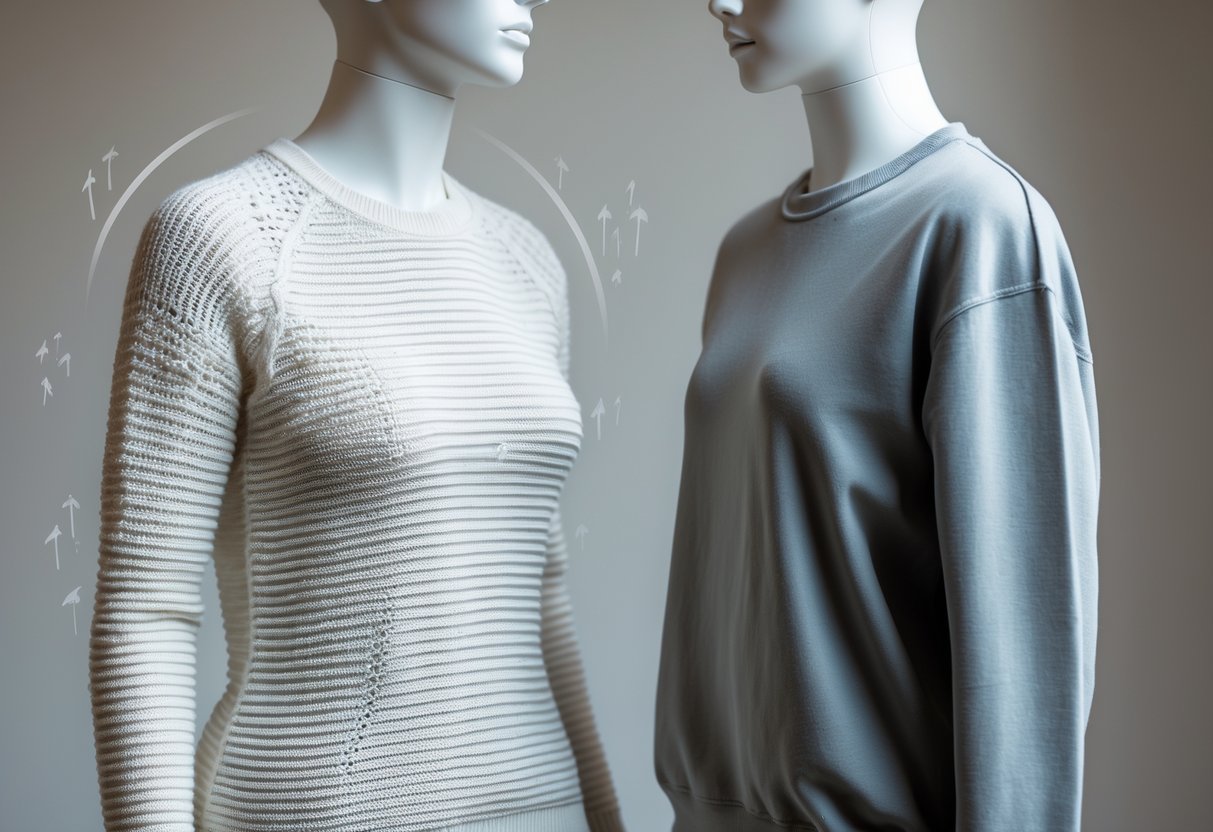
Sweaters are usually made with a knit construction. This means they use loops of yarn that create small air pockets. These gaps let air pass through more easily, which helps the wearer stay cooler.
Sweatshirts, on the other hand, often use thicker, tighter woven or knit fabrics. This construction limits airflow. As a result, sweatshirts trap more heat and provide better insulation against cold weather.
Because of their thicker fabric, sweatshirts also tend to hold in moisture longer. Sweaters can feel less warm but offer better ventilation. This makes sweaters a good choice for mild conditions.
In contrast, sweatshirts work well in colder settings where warmth is more important than breathability. Choosing between a sweater or sweatshirt depends on the balance needed between airflow and warmth.
8) Care Instructions

Sweaters often need gentle care to keep their shape and texture. Many require hand washing or delicate machine cycles with cold water. Using a mesh laundry bag can help protect them during machine washing. Some sweaters, especially those made of wool or with embroidery, should be dried flat to avoid stretching.
Sweatshirts, by contrast, are usually easier to clean. Most sweatshirts can be washed in a regular washing machine. Turning them inside out before washing helps protect the fabric and color. Sorting by color and fabric type also helps prevent damage.
Drying sweatshirts is typically simple, often done on low heat in a dryer. Sweaters generally need more careful drying methods to keep their fibers intact. Checking the care label on either garment is important to ensure proper cleaning and to extend its lifespan.
9) Layering Ability

Sweaters are designed to fit closely and work well as a middle layer. They can easily be worn under jackets without adding too much bulk. This makes them a good choice for colder weather when extra warmth is needed.
Sweatshirts are typically thicker and can be worn on their own. They provide enough warmth to serve as an outer layer in mild weather. At the same time, sweatshirts can also fit under heavier coats or jackets when the temperature drops.
Both sweaters and sweatshirts offer flexible options for layering. Sweaters are often lighter and more breathable, making them suitable as a base for outerwear. Sweatshirts tend to be heavier, so they might feel bulkier when layered but offer good insulation by themselves.
10) Style Variety

Sweaters offer many styles to choose from. Common types include cardigans, which open in the front with buttons or zippers. Pullovers are also popular, worn by pulling them over the head.
Other sweater styles include turtlenecks and crew necks. These styles can be made from wool, cotton, or other yarns, giving them a dressier look.
Sweatshirts usually have a simpler design. Hoodies are a main style and include a hood and often a front pocket. Crewneck sweatshirts have no hood, with a round neckline.
Sweatshirts tend to be more casual and sporty. They are commonly made from thicker cotton or fleece, focusing on comfort.
Both sweaters and sweatshirts offer a range of choices for different occasions. Sweaters lean toward formal or business casual styles, while sweatshirts are better for relaxed, everyday wear.
Key Differences Between Sweater vs Sweatshirt
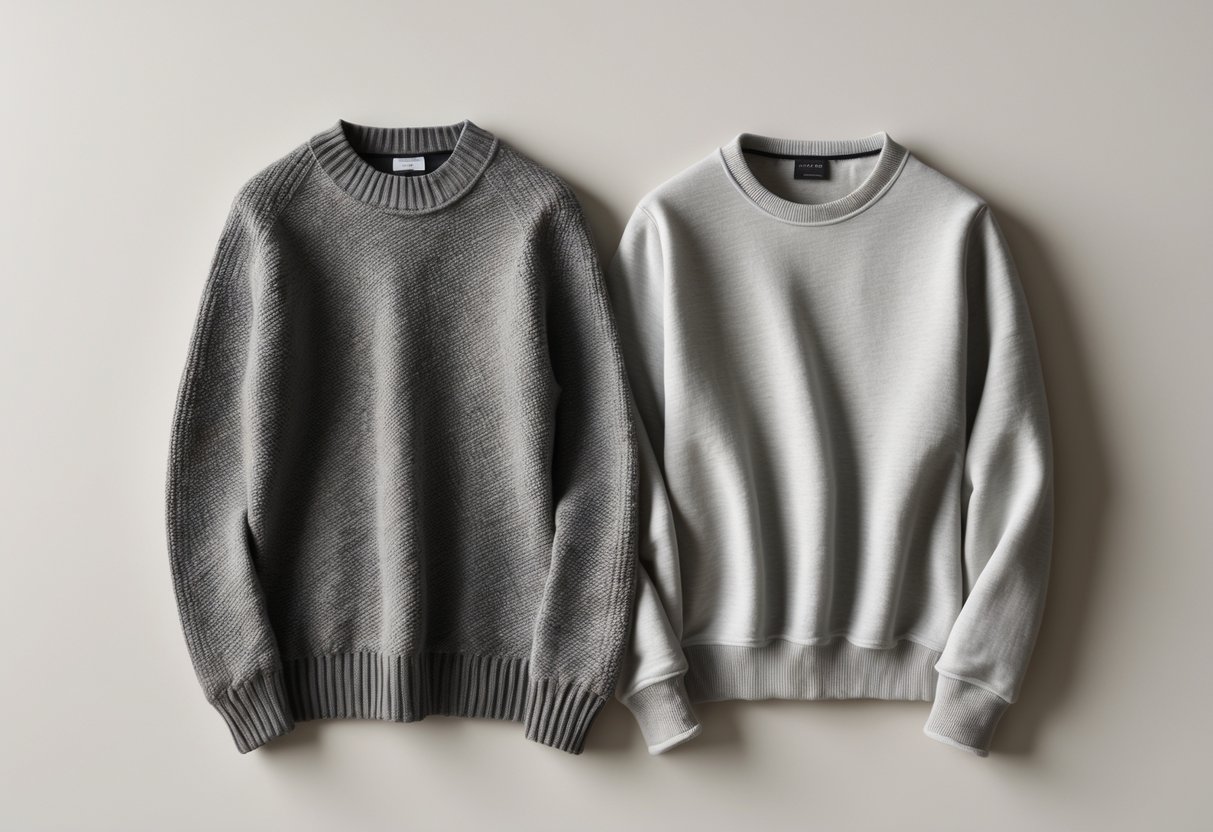
Sweaters and sweatshirts differ mainly in fabric, design, and how they work in different weather. Knowing these details helps choose the right clothing for comfort, style, and temperature.
Material Composition
Sweaters are usually made from knitted yarns such as wool, cotton, or cashmere. These fibers provide warmth and breathability. Wool sweaters offer good insulation and can keep heat in, making them ideal for cold weather.
Sweatshirts are typically made from thicker cotton or polyester blends with fleece lining. This material traps heat and feels soft on the inside. They are less breathable than sweaters, focusing more on comfort and casual use.
| Material Type | Sweater | Sweatshirt |
|---|---|---|
| Common fabrics | Wool, cotton, cashmere | Cotton/polyester blend, fleece |
| Warmth level | High, breathable | Moderate to high, less breathable |
| Texture | Smooth or ribbed knitting | Soft fleece inside, smooth outside |
Design and Structure
Sweaters have a knitted design with various patterns and textures. They often have features like buttons, collars, or a tighter fit. Sweaters are designed for both casual and formal settings, making them versatile.
Sweatshirts have a thicker, smoother surface and often no buttons or collars. They usually have a looser, boxier fit and may include hoods or pockets. This design targets casual wear and sports activities more than formal use.
Seasonal Versatility
Sweaters work best in cooler, dry conditions. Their breathable yarn lowers overheating risk while providing warmth. They suit fall and winter but can be worn indoors in spring.
Sweatshirts excel in casual cold weather and light winter days. Their fleece lining traps heat well but can feel heavy in warmer settings. They are often preferred for outdoor activities in mild to cool weather.
Care and Maintenance

Sweaters and sweatshirts need different care because of their materials and construction. Proper handling helps keep them looking good and lasting longer. Knowing the right cleaning methods and understanding durability will guide how to treat each garment.
Washing Recommendations
Sweaters often require gentle washing due to delicate fibers like wool or cashmere. Many need hand-washing with cold water or dry cleaning to avoid shrinking and loss of softness. Using mild detergent designed for wool helps protect the fabric.
Sweatshirts are generally easier to wash. Most can be machine-washed in warm water on a gentle cycle. They tolerate regular detergents and can often be tumble dried on low heat. Turning sweatshirts inside out before washing protects prints and reduces pilling.
Avoid using bleach or fabric softeners on both garments, as these can damage fibers. Drying should be done carefully; sweaters benefit from flat drying to keep their shape, while sweatshirts handle gentle machine drying.
Longevity and Durability
Sweaters, especially those made from fine wool or cashmere, are less durable if not cared for properly. Rough washing or drying can cause shrinking and fiber breakage. Pilling is common and can be minimized by gentle use and occasional de-pilling with a fabric shaver.
Sweatshirts are built for durability and casual wear. Their thicker cotton or polyester blends resist wear and tear better under frequent washing. They maintain their shape well and require minimal maintenance to stay comfortable and functional over time.
Proper storage also affects how long these garments last. Sweaters should be folded and stored in a cool, dry place to avoid stretching. Sweatshirts can be hung or folded without much risk of damage.
Frequently Asked Questions
Sweaters and sweatshirts differ in their materials, construction, warmth, style, and care. Each serves different needs depending on the occasion, comfort preference, and weather conditions. Understanding these details helps in choosing the right garment for specific situations.
What distinguishes a sweater from a sweatshirt in terms of material and construction?
A sweater is usually knitted from wool, cotton, or other yarns. It has a textured, woven feel due to the knitting process.
A sweatshirt is made from fleece or jersey fabric. It is typically a pullover with smooth surfaces and ribbed cuffs and hems.
Can sweaters be as casual as sweatshirts, and in what contexts?
Sweaters can be casual, especially when made from simple cotton or worn loose.
However, sweatshirts are generally more casual and sporty. Sweaters can be worn in casual or semi-formal settings, while sweatshirts suit relaxed, informal occasions.
In terms of warmth and insulation, how do sweaters compare with sweatshirts?
Sweaters offer warmth from dense knitting, which traps air close to the body. Wool sweaters tend to be very warm.
Sweatshirts provide warmth mainly through soft fleece lining inside, which keeps heat in but offers a lighter insulation than thick wool.
What are the appropriate care instructions to maintain the quality of sweaters and sweatshirts?
Sweaters often require gentle washing or hand washing to prevent shrinkage or damage. Wool sweaters may need special detergent and air drying.
Sweatshirts can usually be machine washed and dried but should be turned inside out and washed in cold water to keep fabric soft and colors bright.
How do the styles and versatility between sweaters and sweatshirts differ for various occasions?
Sweaters can have collars, buttons, or patterns, which make them suitable for work, dinners, and formal gatherings.
Sweatshirts maintain a simple, pullover style best for casual wear, sports, or lounging. They are less versatile for formal settings.
Are there specific seasons or climates where wearing a sweater over a sweatshirt is more favorable?
In colder climates or winter seasons, layering a sweater over a sweatshirt can provide extra warmth and insulation.
This combination works well when outdoor temperatures drop but individual garments alone don’t offer enough heat.





